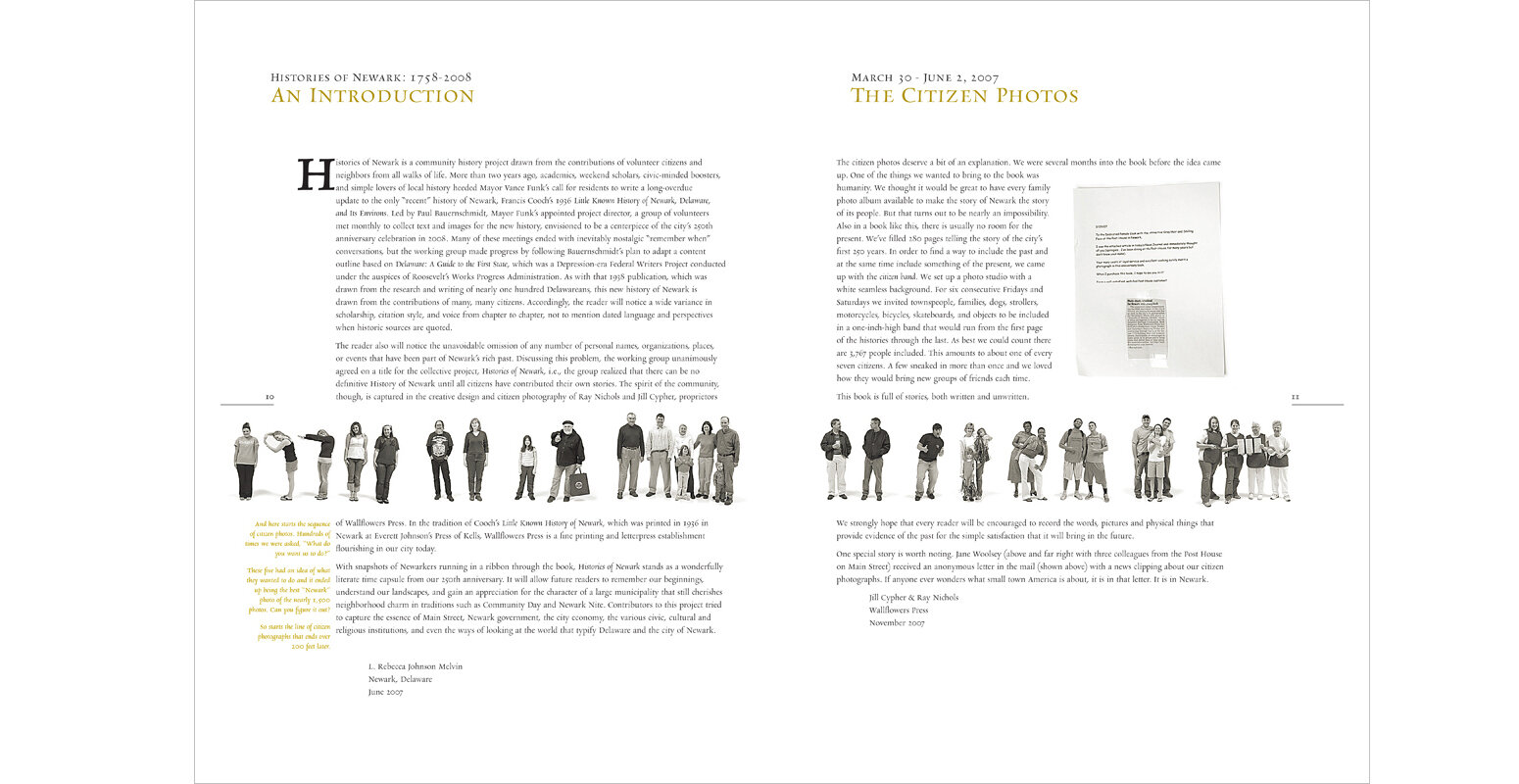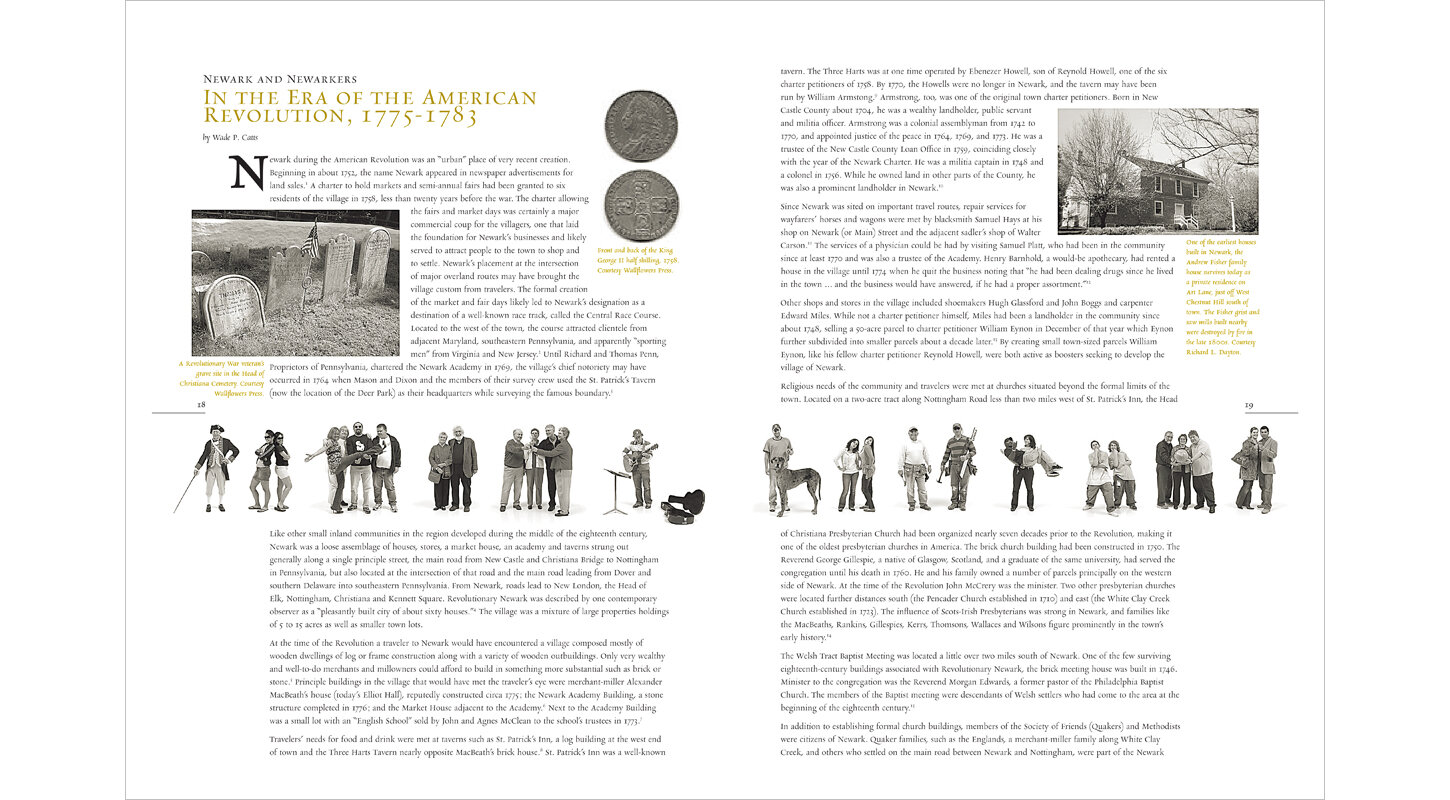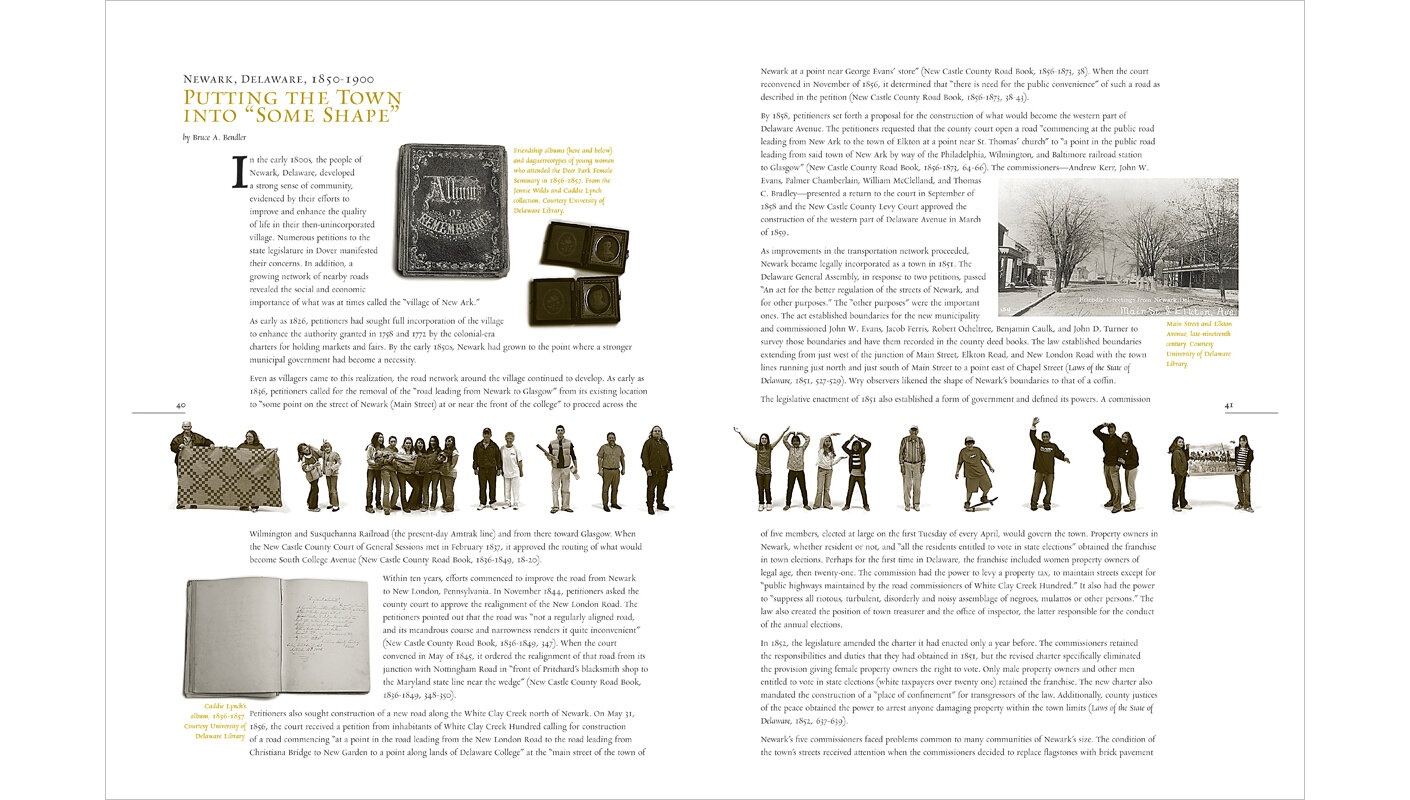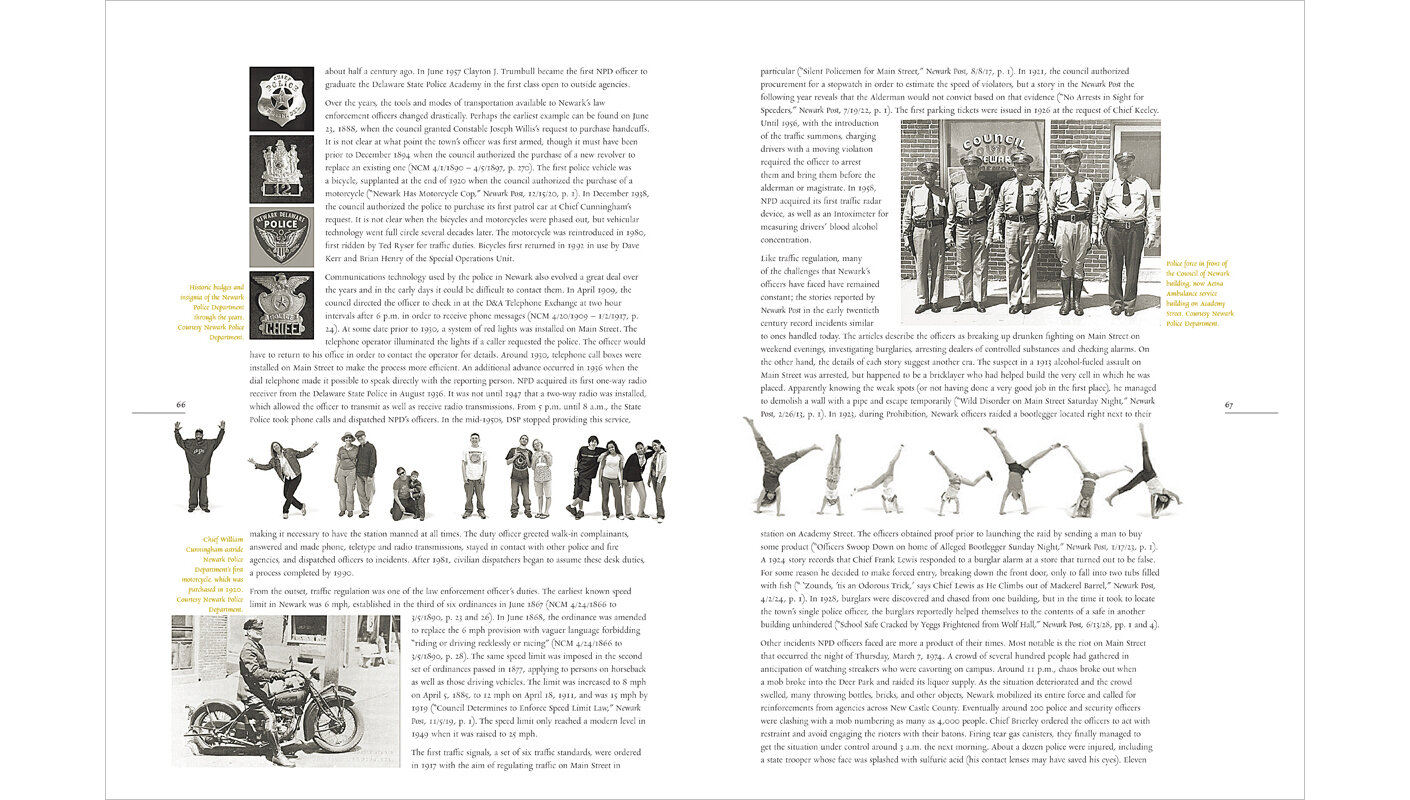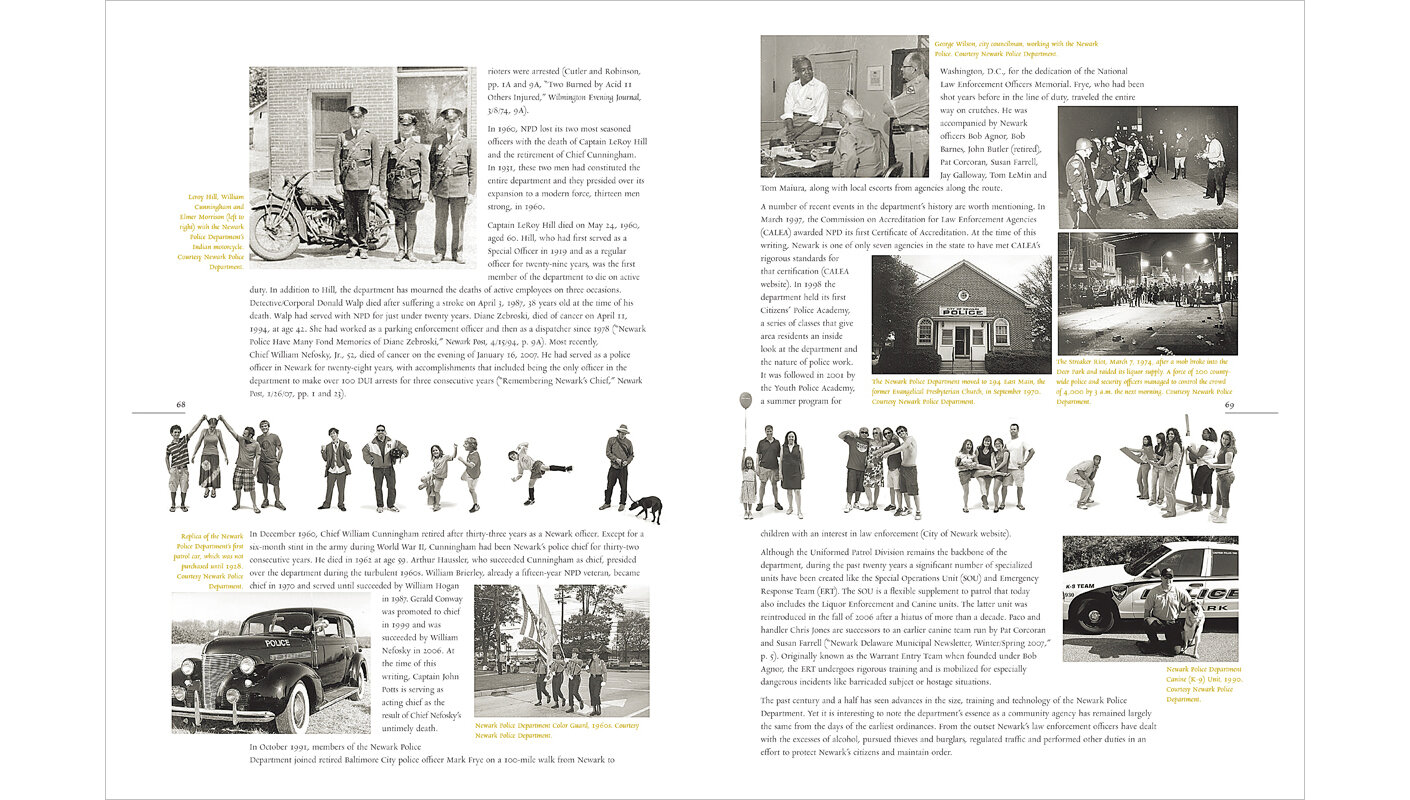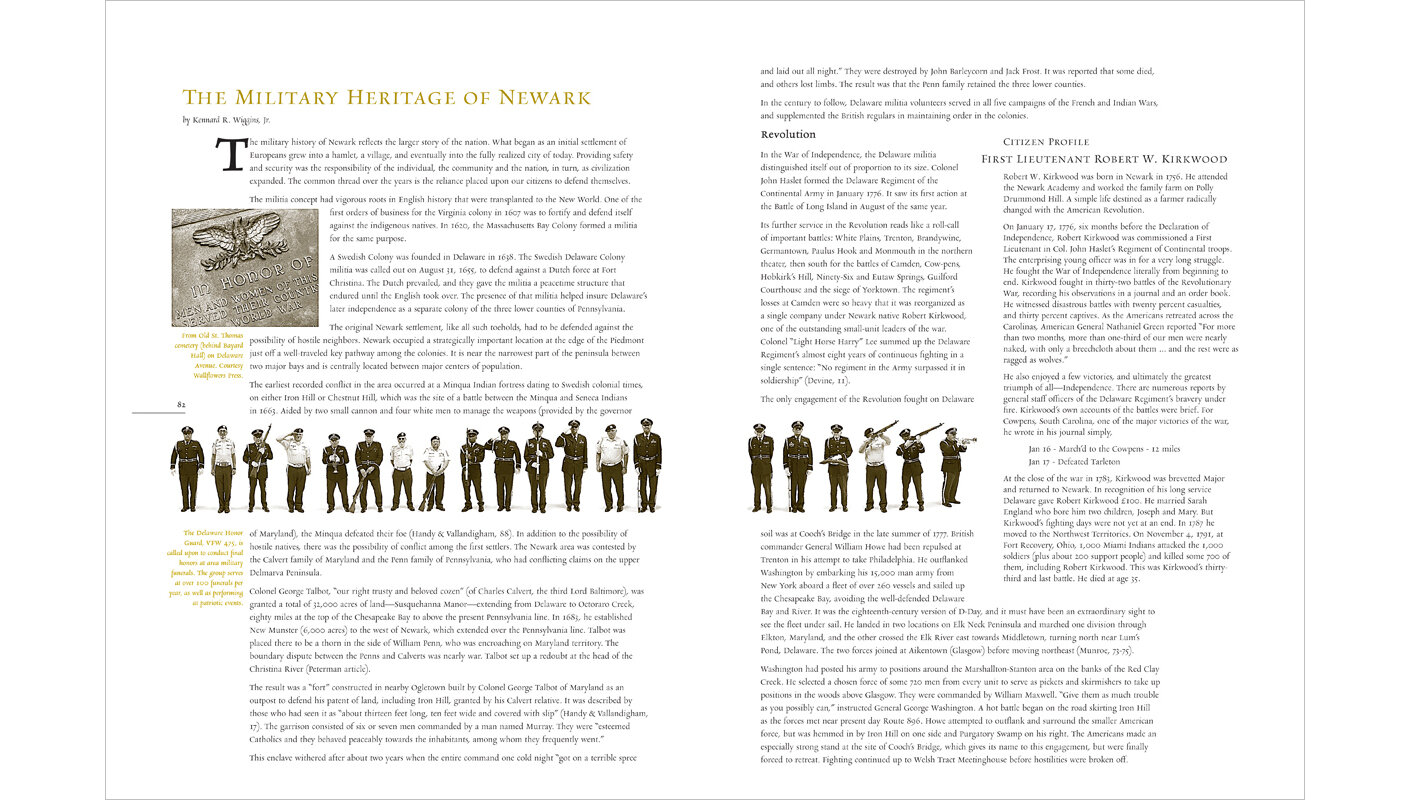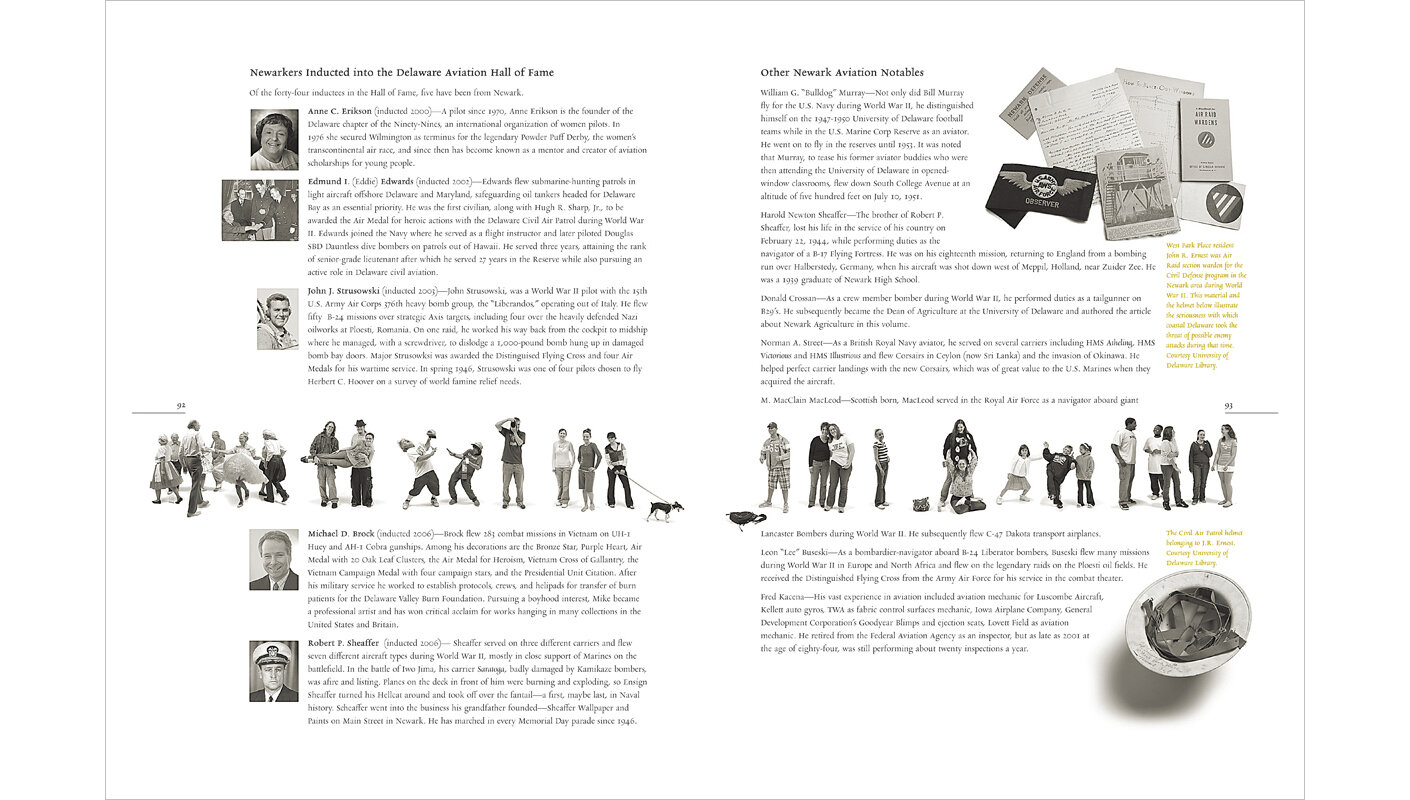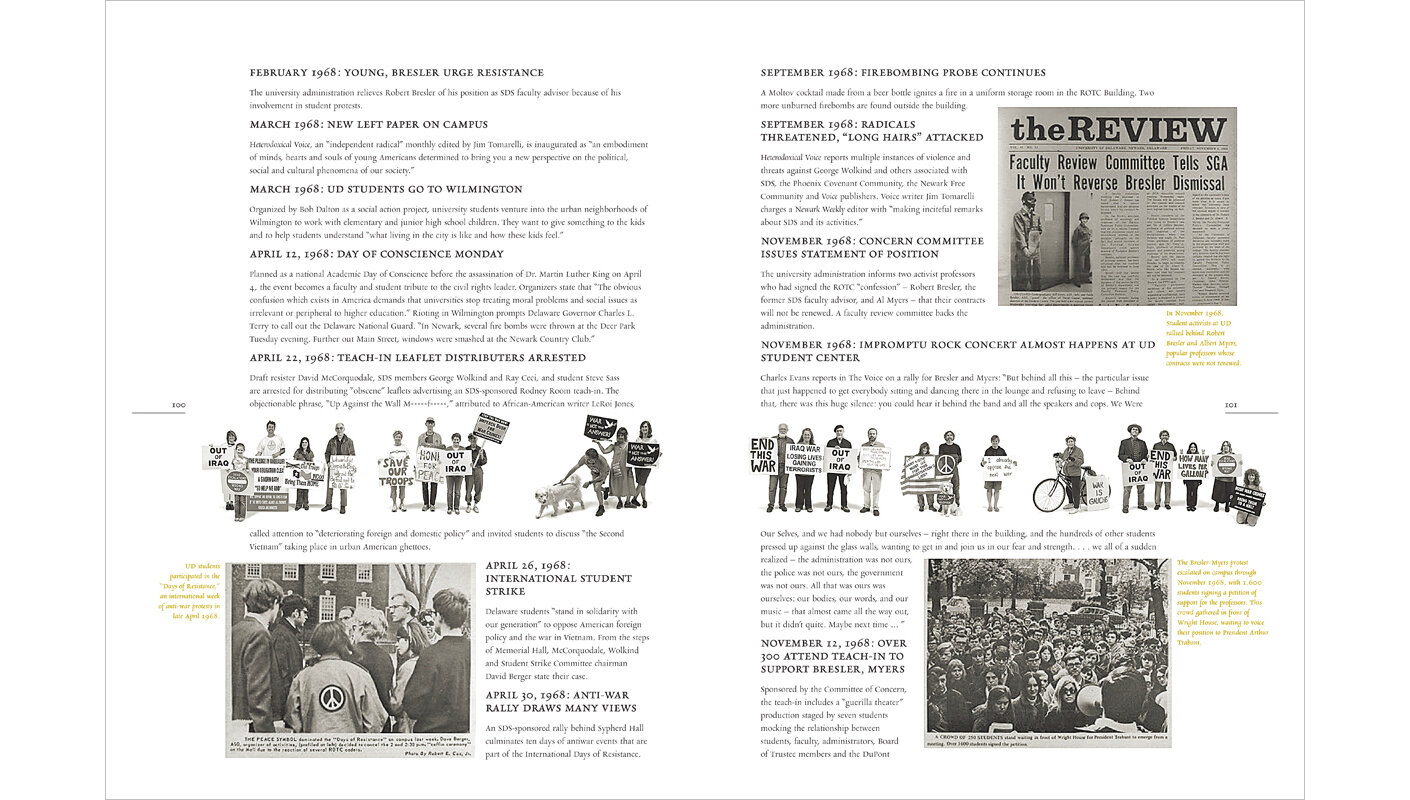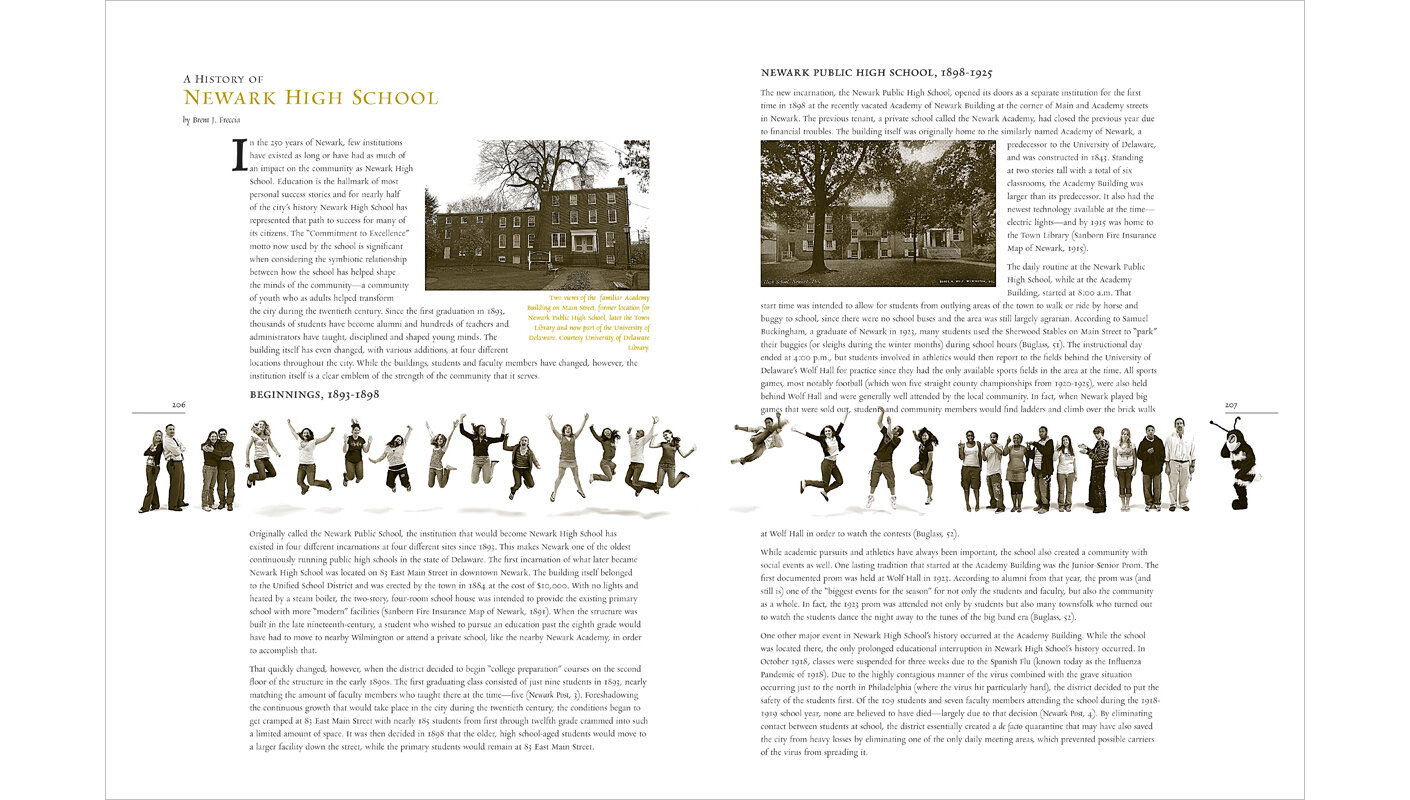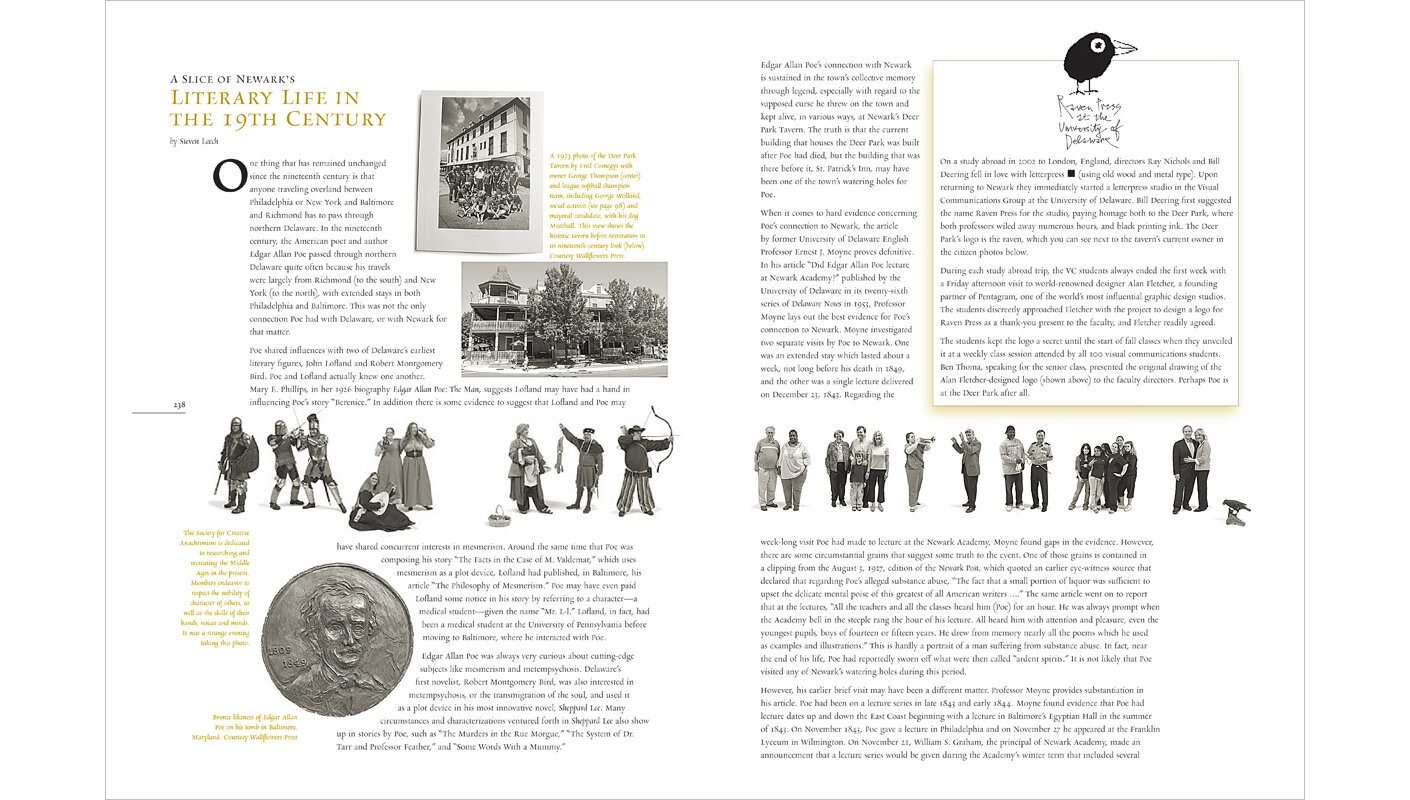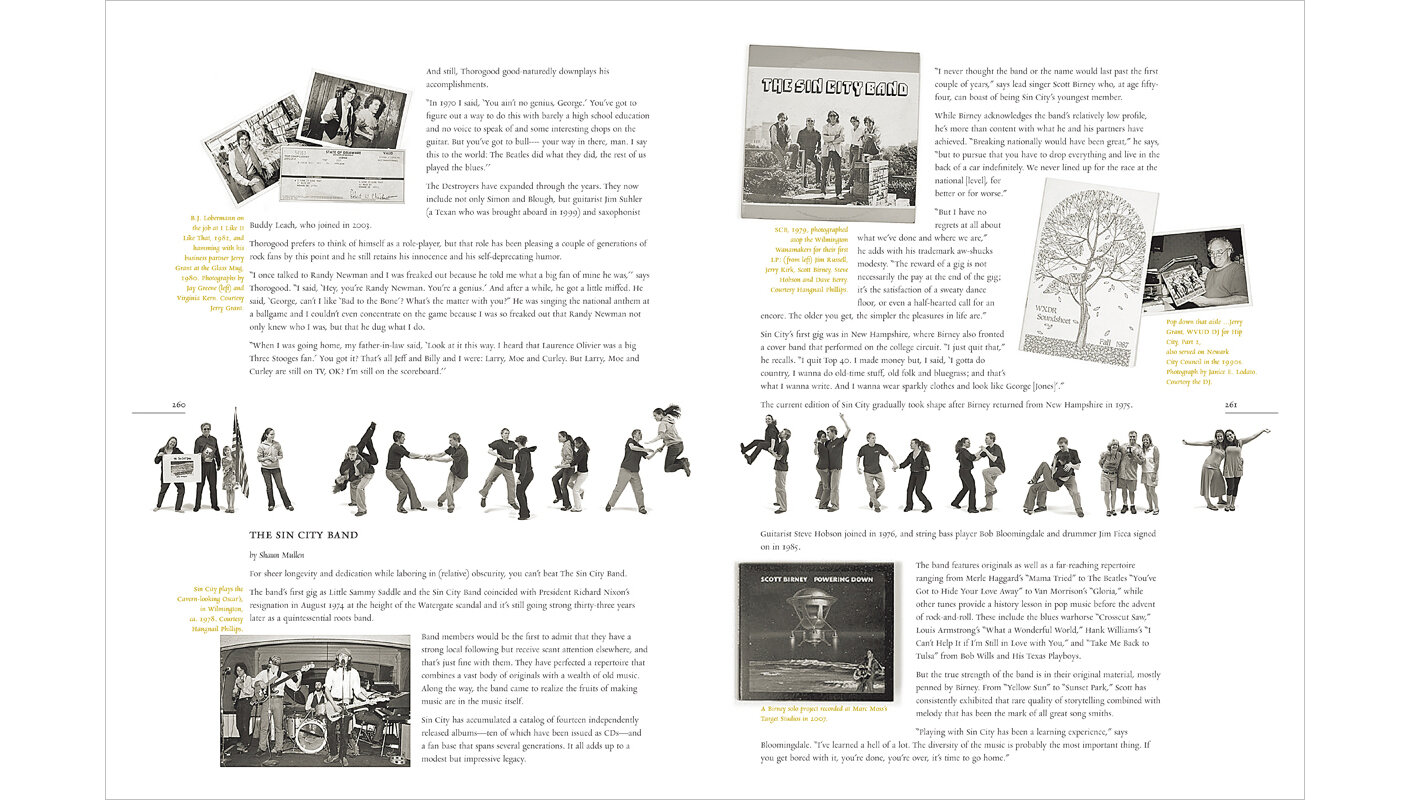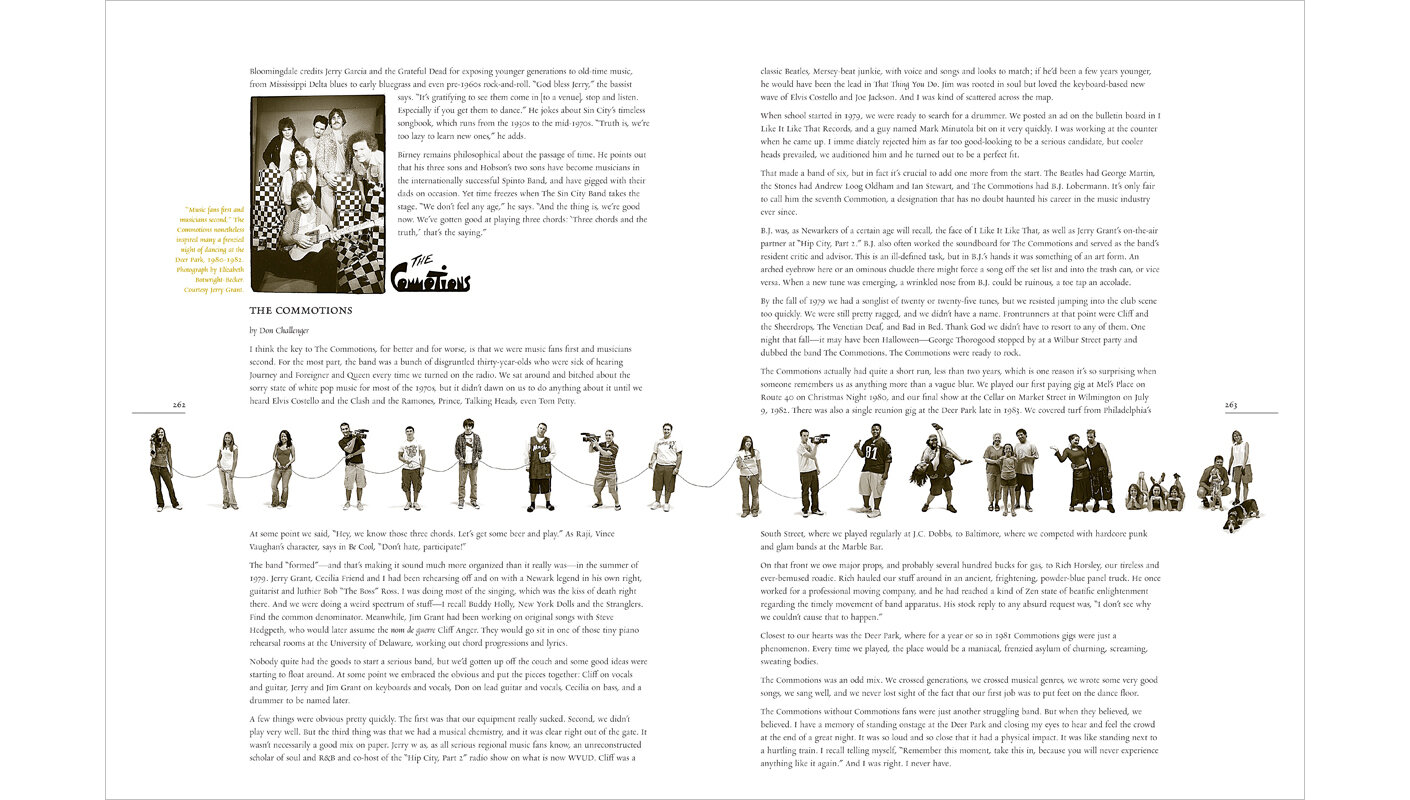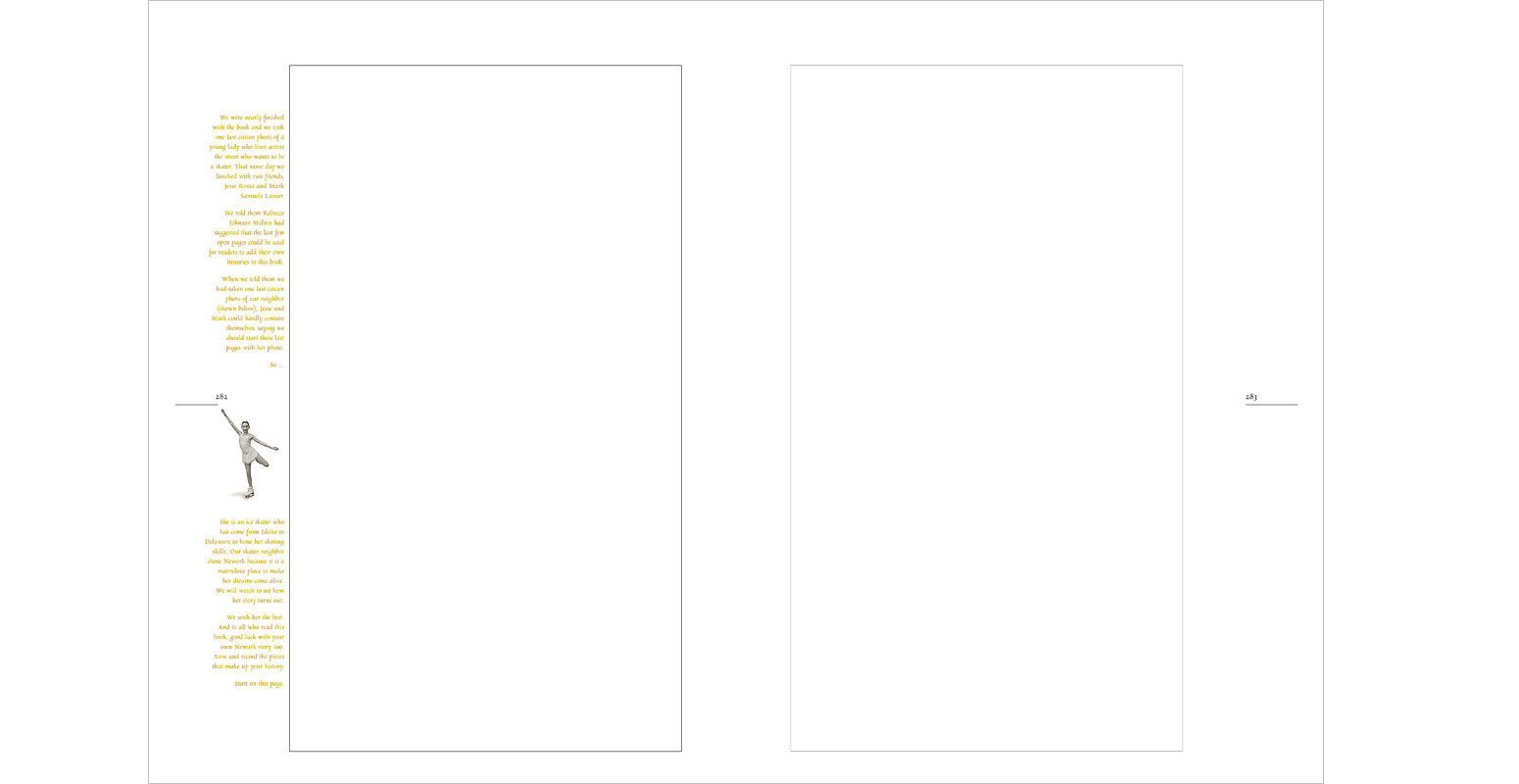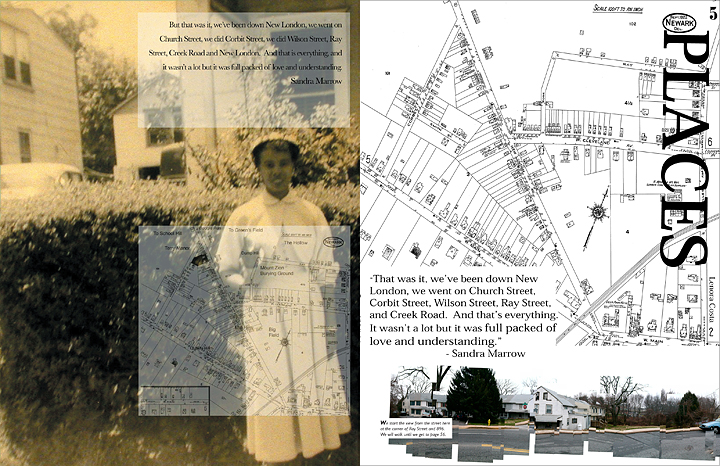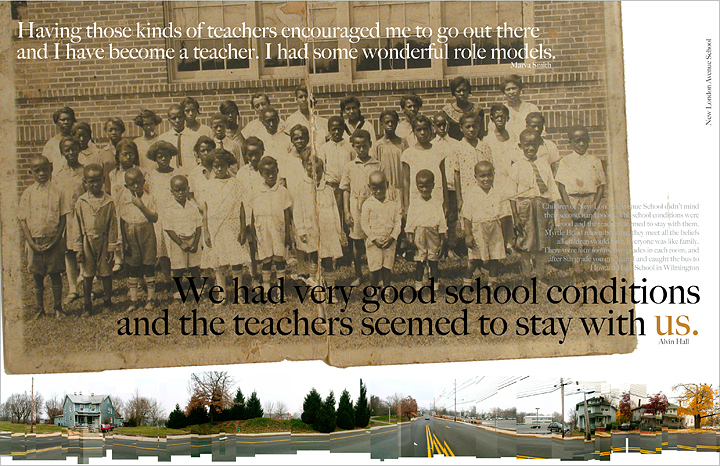Picture #1 of the CITIZEN BAND was such a good idea from the 5 women in the photo that we decided to make it the first one. Can you figure out why?. Photo #2 is Jill and I
After we had finished the citizen band here are some statistics.
Scheduled hours included in photoshoots : 98
Total number of citizen photos taken : 5,054
Total file size of originals (color .jpg images) : 6.86 gigabytes
Total number of retouched photos : 1,237
Total file size of retouched photos (black/white .tif images) : 2.79 gigabytes
Estimated hours spent retouching : 155
Total citizens included (some sneaked into multiple images which was OK with us) : 3,767.
The original name we were using for our studio was Wallflowers Press. After a bit we decided against it because anytime anyone Googled it they would be getting “press kits” for the band “Wallflowers.”
As Wallflowers Press we designed and produced a lot of the photography for the nearly 300 page book on the Histories of Newark: 1758-2008.
We got a nice write-up in the Wilmington News Journal. The bike riders featured are worth a bit of the story.
As the ‘citizen photos’ part of the project was just getting started we hadn’t had a lot of publicity or word-of-mouth advertising happening. We had gotten the Wilmington News Journal to send down a reporter and a photographer on Friday, April 30 (our first day of shooting). They came at 5:00.
And it was dead at the photoshoot when the News Journal got there.
Ray was standing outside trying to find anyone to come in and be in a photograph. All of a sudden a group of about 25 bicyclists were coming down the street and holding up traffic. They took up the complete width of Main Street. Ray walked out and tried to talk with them while they rode by trying to get them to come in to do a photo. Not much enthusiasm for it at that point.
About 20 minutes later and our photoshoot was still just as dead the group circled back down the street in front of the building we were were holding the photoshoot. This time Ray went right out into the middle of the street to force them to listen to his story. “Be in the photograph and we’ll promote your cause.”
So they came in. We think the article pays off the promotion promise. Their group is called “Critical Mass.”
We are headed into the final stretch with the Histories of Newark 1758-2008. Rebecca Johnson Melvin, Jill and I traveled to Ivyland, Pennsylvania, to visit Downey Hoster at Hoster Bindery to approve the foil stamping on the hardback covers, to get a personal tour of the facility, and to talk about final details with the binding and delivery of the book.
It was also our first chance to see the final folding of the book’s signatures and the nesting of the signatures. There are some details we wanted in the book to help give it some sense of being handmade. Two things we did were to print the book on two colors of paper—vanilla and white and to leave the front edge of the book un-trimmed.
The book is printed in eight-page signatures (sheets with four pages on one side and four on the other which are folded in half both ways to get the pages oriented correctly). There is one signature in vanilla with two signatures in white nested inside each other. That way the book has 8 pages of vanilla followed by 16 pages of white. We thought it would give the book some texture. The other thing we wanted was a rough fore edge (the edge away from the spine). There was no way to do the book with deckle-edged (rough) paper (we would have loved to do it in handmade paper but we wouldn’t have gotten the book for another 22 years and the cost would about the same as putting in a city subway system). Anyway that fore edge is left untrimmed and it looked exactly like we had envisioned it. Everything we’ve heard about Hoster Binder has been positive and after the visit we saw why. Top notch equipment, personnel, vision, and the ability to see ways to contribute that the designer / printer can’t see.
One very nice element that Downey has added to our book is to round the spine. It seems like a small detail, but after having the architecture of the book explained from the point-of-view of the spine it is a must if you can have it.
The critical moment was Friday, December 7 at 6:00 pm. The Histories of Newark group along with the Mayor had an opening ceremony along with a booksigning. A lot of the authors come and we kind of wonder if anyone will want us to sign their copy of the book.
Another detail we wanted was to do a full dustjacket that folded over on the top and bottom. The jacket designed by Jill Cypher ended up being a perfect solution. We used a hand-drawn map of the city from 1820 and overlaid images of Newark people into the house shapes. It does a wonderful job of mimicking the inside look of the book.
We also got three sets of the unbound book with all of its parts. Wallflowers Press donated one to Special Collections at the University of Delaware Library, one to the Newark Historical Society, and we will keep one. Once we get into our new letterpress studio feel free to stop in and take a look. It is an interesting process and this book was done right from the very start.
Tell the Post waitress story.
Tell the Critical Mass story.



